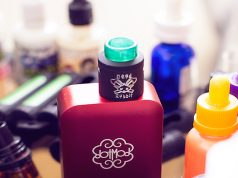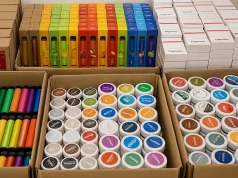
Interviewed by Patricia Kovacevic, General Counsel and Chief Compliance Officer at Nicopure Labs, Clive Bates is questioned about his perspective of the regulatory framework the e-cigarette is receiving in the USA and what could be done to improve the current situation.
Basically, the US FDA’s strategy is to take away almost all the vaping products available in the country, allowing only a few products, basically those manufactured by the Big Tobacco industry. In a second step, FDA will allow the products on a case by case basis, a process that relies on the evaluation of PMTA files submitted by manufacturers (at least those who survive the crisis) for each product.
FDA’s evaluation procedure is arbitrary
Clive Bates is critical towards this approach that he compares to the European situation. In Europe, all products remain available until a proof is made that they do not comply with standards. The TPD asks the manufacturers or importers to follow a “checklist” to value their products.
The American evaluation procedure, in itself, is arbitrary to the specialist because the criteria to allow a product or to reject it are not clearly identified, giving the chance of success uneven. The Industry’s feeling is that the FDA don’t really know what they are looking for and that the actual period is some king of training for the staff. A training period that will cause the collapse of a successful market with the potential danger of a secondary market, much darker and more illegal than the official one.
A second issue is that, according to Clive Bates, the amount of PMTAs will prevent the administration to evaluate all products. FDA’s bureaucracy, he thinks, cannot cope with all the applications in due time since they did not show their capacity to process these things in other domains.
The downside of the FDA’s strategy is that some products people selected to combat their smoking will become unavailable to users even if they still need them. Clive Bates also notices that, in contrast with the US administration that demonizes the e-cigarette as a vector of the worldwide nicotine epidemic and a gateway to smoking for the youth, the marketing of these products is rather positive, “trying to persuade people to turn to something else than smoking”.
CDC is providing “a barrage of misleading information”, they don’t make the “key information” about vaping available to the society
Another problem that Clive Bates tackles is the misleading information that the CDC brings to the public regarding the relative risk of vaping compared to smoking. By always putting forward the potential risk of a certain molecule to a certain type of cell, they dilute the information that vaping is overall safer than smoking.
The tobacco control specialist said he was shocked by the numbers provided by a recent US survey that showed 5.3% of the american adults think that vaping is more harmful than smoking, 37% think that it is as harmful or more harmful than smoking and 35% simply don’t know.
By pointing out the different perspectives between European and American regulatory approaches, Clive Bates describes a couple of propositions he made to Mitch Zeller, the Director of Center for Tobacco Products at the FDA, when he met him:
- Firstly, the introduction of product standards would be beneficial to the industry.
- Secondly, the PMTA should apply only to new products and not to products already on the market.
Vaping has a very attractive proposition to smokers
The specialist concludes that vaping provides to smokers everything that they look for, nicotine, taste, throat hit, rituals, it contributes to socializing and adds some things like personalization. Vaping takes away what people don’t like from smoking, like cancer, heart diseases, respiratory illnesses, the social stigma of bad tobacco smell and the fact that smoking is getting more and more expensive.
All combined, it is not surprising that vaping is so successful, Clive Bates believes that by just telling the truth about vaping, we would see more and more people switching from smoking than what actually happens. “Vaping is a market-based public health intervention that does not involve public health people and noes not involve anything in the public sector”.
The insane situation that is described by the expert is that the only way, actually, for the public to have a correct information about vaping is to rely on Big Tobacco’s successful applications whereas it is of the agency’s responsibility to provide this information for the public to make its own choice.







